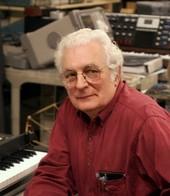
Robert Moog, the inventor whose synthesiser electrified the 1960s, dies of cancer aged 71
By David Usborne in New York
Robert Moog would not be expecting pipes or strings when friends and admirers from across the music world assemble in Asheville, North Carolina, tomorrow to bid him farewell. If there is to be Bach at his memorial service, please let it be switched-on Bach, created with currents of electricity.
Just four months after he was diagnosed with an inoperable brain tumour, Moog, the inventor of the series of music synthesisers that bore his name and helped to revolutionise modern rock sounds in the mid-Sixties and Seventies, died at his home in Asheville aged 71 on Sunday.
While other synthesisers may have been available, it was the Moogs to which bands and performers almost invariably turned. The Beatles used a Moog to record their last album, Abbey Road.
But more than anyone it was Walter Carlos - now Wendy following a sex change - who turned the Moog into a mainstream alternative to traditional instruments. His 1969 album Switched-On Bach, a collection of Bach pieces played with Moog machines, became the first classical album to go platinum. In 1977, we vibrated to the first completely Moog-synthesised pop hit, "I Feel Love" by Donna Summer.
Musicians chose the Moog because of the unique quality of sound it created. It soon began to serve as a solo instrument, particularly for artists such as Manfred Mann, Yes and Pink Floyd.
"The sound defined progressive music as we know it," said Keith Emerson, keyboards player with Emerson, Lake and Palmer.
It was back in 1954 that Moog first started his unusual career, building and selling so-called theremins with his father. Originally invented by a Russian of the same name in 1919, the theremin was a box that made strange musical sounds when the artist waved his hands between two protruding tubes. Ten years later, using new solid-state electronic technology and with the help of a New Jersey composer, Herbert Deutsch, he invented and marketed his first Moog Modular Synthesiser.
He can have had no idea at the time how far it would catapult popular music into its electronic future. According to friends, he never felt like a musician or a star himself. He was just a technician.
He sold his Moog-making company in 1974, just as the popularity of the new synthesisers was peaking and before they were somewhat overshadowed by new digital sound-making machines. But the Moog sound never died and was kept alive over the ensuing years by progressive rock musicians such as Brian Eno and Frank Zappa as well as the Cure, Fatboy Slim and Stereolab.
Last year a documentary film about the inventor, simply called Moog, was released with tributes to him from a range of artists including DJ Logic, Money Mark, Mix Master Mike, Jean Jacques Perrey and Rick Wakeman, formerly of Yes.
Meanwhile, in recent years the musician Charles Carlini has been promoting a festival in his honour in New York City called Moogfest.
"He's like an Einstein of music," Mr Carlini said, shortly before Moog's death. "He sees it like, there's a thought, an idea in the air, and it passes through him. A lot of people don't realise what this man brought to the masses. He changed the way we hear music."
After spending much of the Nineties as research professor of music at the University of North Carolina, Moog returned to running a full-time electronic instrument business, opening his latest company, Moog Music, just three years ago.
Four other inventions that changed the musical world:
PIANOFORTE
The piano was developed in 1709 by Bartolomeo Cristofori di Francesco. Unlike the harpsichord, where the strings are plucked, the piano is a percussion instrument, which uses hammers to create the sound.
SAXOPHONE
The saxophone was invented by Adolphe Sax, and first exhibited at the 1841 Brussels exhibition. Originally intended as an orchestral instrument, it has transformed jazz.
ELECTRIC GUITAR
When the solid-body electric guitar first became commercially viable in the Fifties, Gibson approached the guitarist Les Paul to help develop a more stylish version. The Les Paul Model, as it was originally called, has changed little since its debut in 1952.
DRUMULATOR
The first Drumulator appeared in 1983, followed by drum machines from Linn and Oberheim, which paved the way for bass-heavy electronic music such as drum 'n' bass and house.
No comments:
Post a Comment